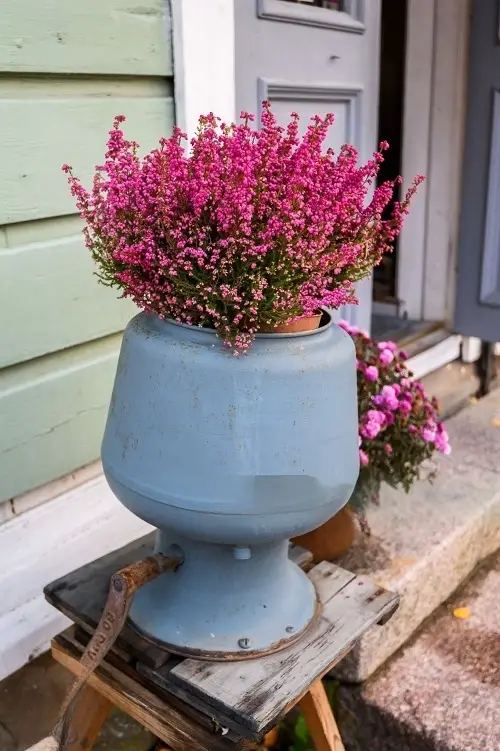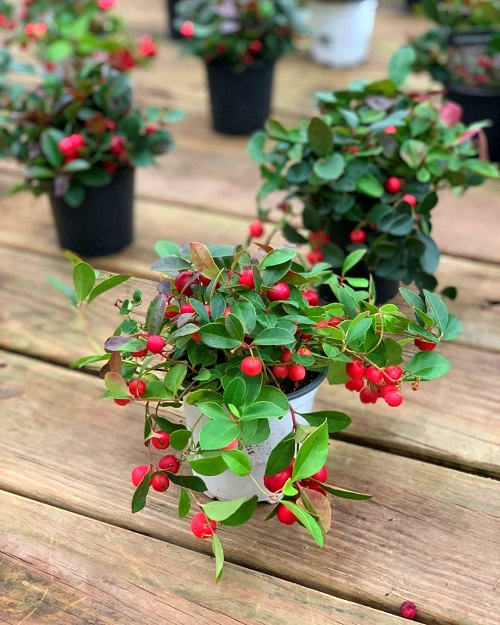Don’t let the frosty weather discourage you! Bring the charm back to your garden with these Flowers that Bloom in Late Fall and Winter!
These hardy blooms, ranging from the frost-kissed whites and icy blues to the rich reds and purples, offer a stunning visual feast when most gardens are resting. Here are some stunning Flowers that Bloom in Late Fall and Winter!
Flowers that Bloom in Late Fall and Winter
1. Snowdrops

Botanical Name: Galanthus nivalis
USDA Zones: 3-9
These little white flowers are the first to emerge from the snow at the tail end of winter. The blooms contrast really well with the light green foliage.
2. Crocuses
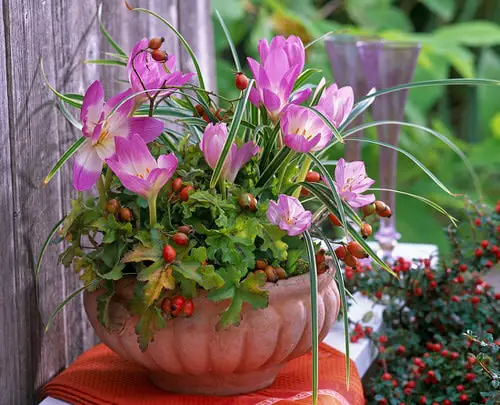
Botanical Name: Crocus spp.
USDA Zones: 3-8
Crocuses are among the first spring bulbs to bloom, and interestingly, a few varieties, such as the saffron crocus (Crocus sativus), buck the trend by flowering in late fall.
3. Wintersweet
Botanical Name: Chimonanthus praecox
USDA Zones: 7-9
Wintersweet, with its powerful fragrance and waxy yellow flowers, brings joy and elegance to the sunny spots of the winter garden with its sweet perfume and color.
Check out the different types of Yellow Flowers here!
4. Toad Lily
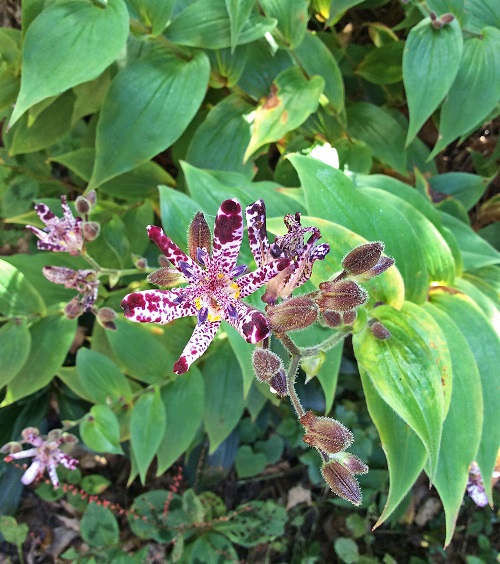
Botanical Name: Tricyrtis spp.
USDA Zones: 4-9
Toad lilies have flowers that look a bit like orchids. They come in all sorts of colors in the late fall and are great for adding a tropical touch to your garden during the cooler months.
5. Cyclamen

Botanical Name: Cyclamen persicum
USDA Zones: 9-11
Cyclamen flowers have a butterfly-like appearance and come in a variety of colors. They usually bloom from fall to winter and are a great option for indoors and outdoors.
6. Ornamental Peppers
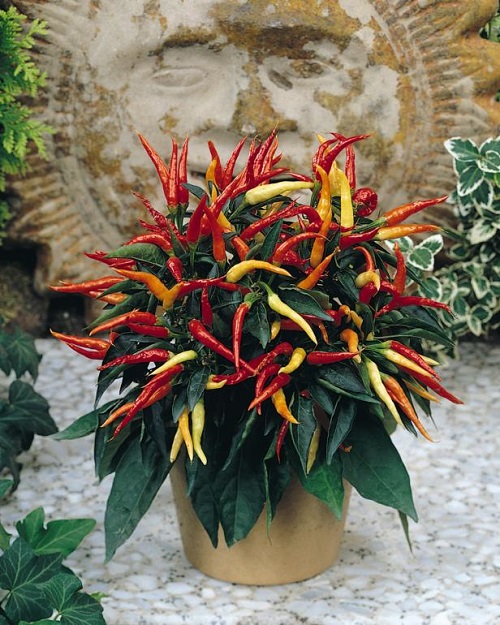
Botanical Name: Capsicum spp.
USDA Zones: 8-11 (commonly grown as annuals elsewhere)
While not flowers, the peppers—in shades from bright red to sunny yellow—create a contrast against the fading fall foliage and are perfect for lively borders and containers.
Check out the best types of ornamental pepper varieties; look here.
7. Heather
Botanical Name: Calluna vulgaris
USDA Zones: 4-6
Heather is a durable evergreen that provides long-lasting color to fall foliage. Its small flowers and vibrant foliage make it ideal for rock gardens and ground cover.
8. Winter Jasmine

Botanical Name: Jasminum nudiflorum
USDA Zones: 6-10
Winter Jasmine is renowned for its vibrant yellow flowers that signal the onset of winter. Its long arching stems are most effective when they dangle down slopes or walls.
9. Camellias
Botanical Name: Camellia japonica
USDA Zones: 7-9
They are distinguished by waxy flowers, which appear in various hues, from white to pink to red, and bloom from late autumn to early winter, depending upon the species.
Do deer eat camellias? Find out here.
10. Hellebores
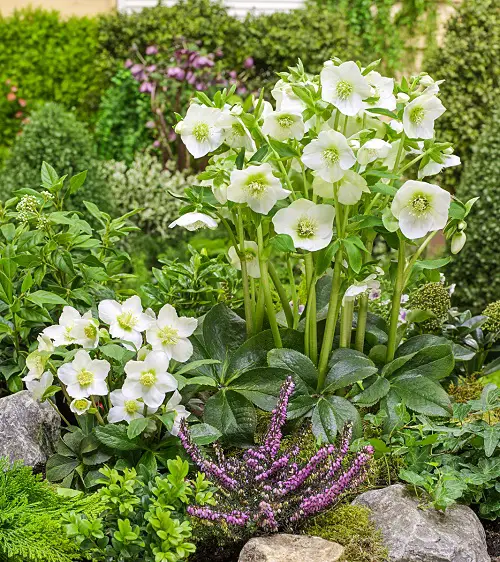
Botanical Name: Helleborus orientalis
USDA Zones: 4-9
Often called the Christmas or Lenten Rose, hellebores produce nodding, bell-shaped flowers in shades of white, pink, and purple from late winter into early spring.
11. Witch Hazel
Botanical Name: Hamamelis spp.
USDA Zones: 3-9
Witch hazel shrubs produce fragrant, spidery flowers in various shades of yellow, orange, or red. They typically bloom from late fall to early winter.
12. Pansies

Botanical Name: Viola x wittrockiana
USDA Zones: 8-11 (grown as winter annuals in some zones)
If you live in a milder part of the country, Pansies are your go-to for winter flowers. They can handle frost and snow and come in all sorts of colors.
Are pansies edible? Check out here
13. Mahonia
Botanical Name: Mahonia spp.
USDA Zones: 5-9
In the fall and winter, Mahonia shrubs will pop up with bright yellow flowers on their spiky stems. They’re also called Oregon Grape Holly.
14. Winter Daphne
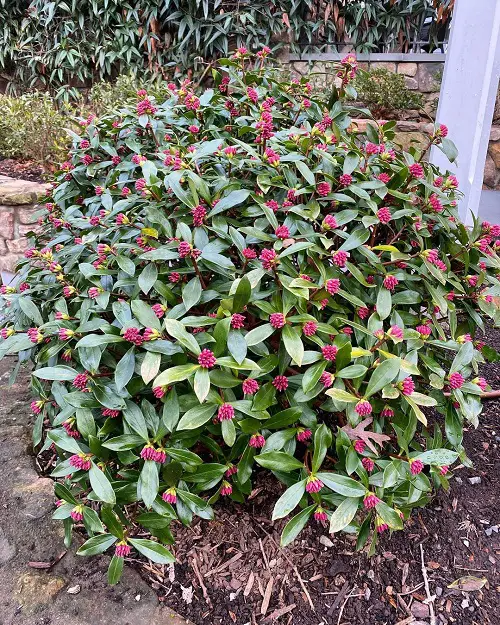
Botanical Name: Daphne odora
USDA Zones: 7-9
Winter Daphne has an amazing scent that you won’t find anywhere else. It’s a great addition to your late winter garden because its flowers stand out against its shiny leaves.
15. Christmas Cactus
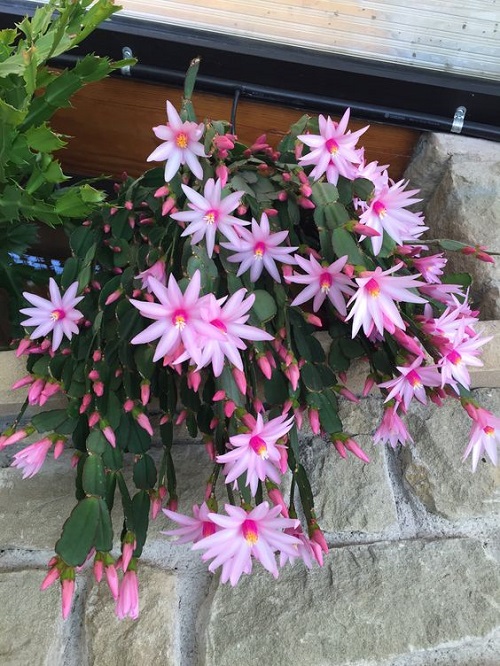
Botanical Name: Schlumbergera truncata
USDA Zones: 10-12 (typically an indoor plant in cooler zones)
The Christmas cactus is one of the most popular houseplants due to its ornamental display of tubular cascading flowers during the holiday season.
Learn how to grow white Christmas cactus here.
16. Winterberry
Botanical Name: Ilex verticillata
USDA Zones: 3-9
While not known for traditional flowers, winterberry shrubs develop bright red berries in late fall and winter, creating a stunning visual display.
17. Japanese Quince

Botanical Name: Chaenomeles japonica
USDA Zones: 5-9
The appearance of the Japanese Quince symbolizes the beginning of spring, with its various colors blooming and its long, spiny branches acting as a strong, protective barrier.



